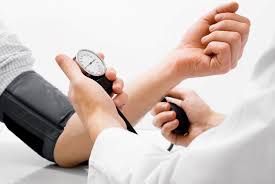He looked perfectly healthy, active, cheerful, and only 40. When Kofi experienced sudden paralysis when warming food one Saturday afternoon in August 2003, no one saw it coming. The doctors later confirmed he had suffered a massive stroke caused by uncontrolled hypertension. He had never checked his blood pressure.
“He said he felt fine,” his wife sadly recounted. “But fine can be deceptive.” Sadly Kofi passed a year after.
High blood pressure, or hypertension, is often called the silent killer and for good reason. It creeps up without symptoms, quietly damaging the heart, brain, kidneys, and eyes until something catastrophic happens.
According to the World Health Organisation (WHO), over 1.4 billion adults worldwide live with hypertension, one in three people between the ages of 30 and 79. Even more alarming: 44 percent of those affected don’t even know it. In other words, hundreds of millions are walking time bombs, living normal lives while their blood vessels silently crumble within.
An invisible epidemic
Two-thirds of people with hypertension live in low- and middle-income countries, where awareness, screening, and treatment remain low. In Ghana, a community-based study by Anto et al. (2023) revealed that almost one in five apparently healthy adults had undiagnosed hypertension.
“Hypertension is so common that people treat it as normal,” says Dr. Abigail A. Agyekum Afoakwa, Principal Regulatory Officer at the Food and Drugs Authority. “But it’s a slow and destructive disease that can lead to stroke, heart failure, kidney damage, blindness, and even dementia. You may not feel sick until your body suddenly gives up.”
The WHO warns that hypertension is now one of the leading causes of premature death worldwide. Yet it remains misunderstood and neglected.
Why so many never know they have it
The tricky thing about hypertension is that it rarely shows warning signs. Some people may experience early-morning headaches, dizziness, blurred vision, or nosebleeds — but most feel completely fine.
“Regular screening is the only way to know,” Dr. Afoakwa stresses. “A blood pressure check takes less than a minute and can literally save your life.”
Even children and young adults are no longer exempt. “We’re seeing more cases among people in their 20s and 30s,” she adds. “Fast foods, alcohol, obesity, and lack of exercise are driving this trend.”
The myths killing us
Part of the problem lies in misconceptions.
* Myth: High blood pressure is only for old people.
Fact: Young adults even teenagers can develop it.
* Myth: I feel fine, so I don’t have high blood pressure.
Fact: Millions of people live symptom-free while hypertension silently damages their organs.
* Myth: I don’t use salt, so I’m safe.
Fact: Most sodium comes from processed and packaged foods, not the saltshaker.
* Myth: I can stop my medication because my readings improved.
Fact: Blood pressure can rise again when medication is stopped. Hypertension often requires lifelong management.
What really causes hypertension
Dr. Yaw Amoah, a medical practitioner, explains: “The heart is like a pumping station. When it pushes blood at very high pressure, the vessels take the strain. Over time, this pressure damages the arteries.”
He categorises hypertension into two main types:
* Essential (primary) hypertension, often due to lifestyle and genetic factors.
* Secondary hypertension, caused by conditions like kidney disease or hormonal disorders.
“Most cases we see are lifestyle-related,” he says. “Smoking, alcohol, obesity, stress, and a diet full of fatty and salty foods — these are daily triggers.”
The simple, lifesaving habit
The frightening truth is that hypertension can remain silent for years, even decades. But its complications, stroke, heart attack, kidney failure are sudden and often irreversible.
The only reliable defence? Early detection and consistent control.
“Check your blood pressure regularly,” Dr. Afoakwa advises. “You can do it at the pharmacy for less than five cedis. That small act could save your life.”
Adults aged 40 and above, or anyone with risk factors like diabetes or obesity, should check their blood pressure at least once a year. Even healthy adults under 40 should check every few years.
When lifestyle is medicine
Fortunately, hypertension is preventable and manageable.
Small, consistent changes make the biggest difference:
* Eat more fruits, vegetables, and whole grains.
* Cut back on processed and salty foods.
* Exercise at least 30 minutes a day — even walking counts.
* Quit smoking and limit alcohol.
* Sleep well and manage stress.
* Take your medications faithfully if prescribed.
For many people, these habits not only lower blood pressure but may eliminate the need for medication altogether.
The global response
To tackle this silent epidemic, the WHO launched the Global Hearts Initiative in partnership with the U.S. Centers for Disease Control and Prevention (CDC) and other organizations. Over 13 million people in more than 40 low- and middle-income countries are now receiving standardised hypertension care through this initiative.
The goal: to reduce uncontrolled hypertension by 25 percent by 2025. But achieving this requires national commitment and individual action.
Your blood pressure, your responsibility
Hypertension doesn’t discriminate. It affects the rich and poor, young and old, men and women alike. But unlike many deadly diseases, it can be prevented, detected, and controlled.
“You may not feel it,” says Dr. Amoah, “but hypertension could be building inside you right now. Don’t wait for symptoms. Know your numbers, live healthy, and check regularly.”
So, before you walk out the door today, stop by the nearest pharmacy or clinic.
Because the silent killer next door might already be living inside you.
The writer Abigail Arthur is a journalist with Citi FM/Channel One TV
Email: [email protected]


Comments are closed.